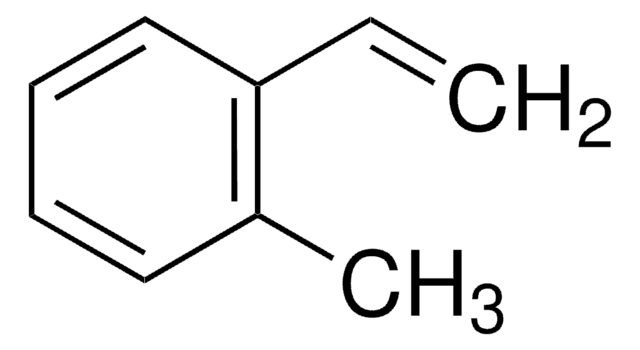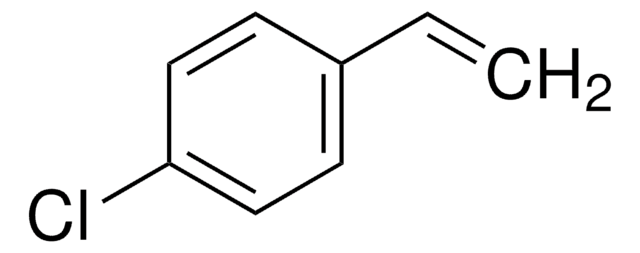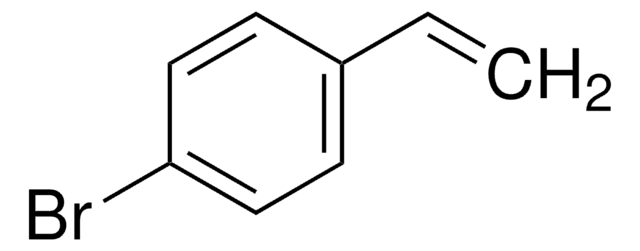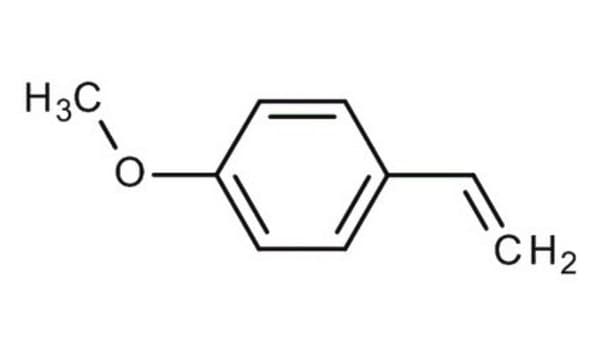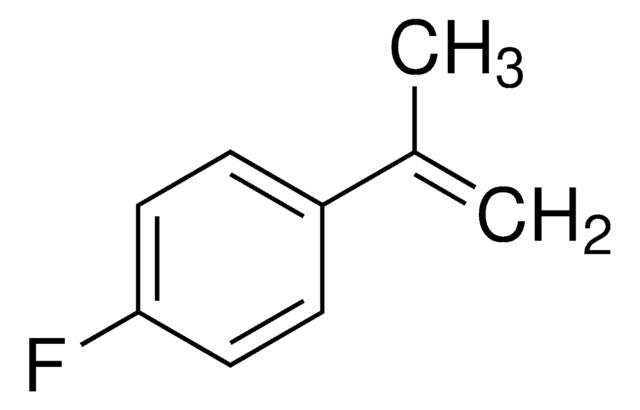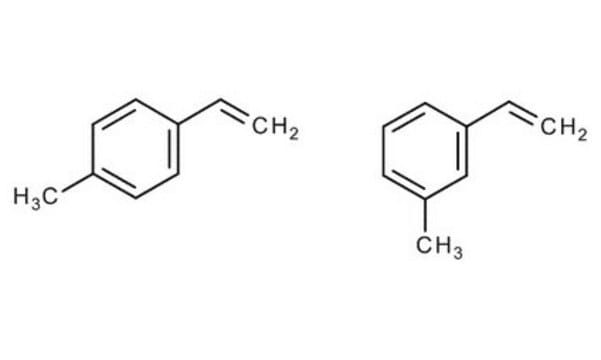M80903
α-Methylstyrene
99%, contains 15 ppm p-tert-butylcatechol as inhibitor
Sinónimos:
2-Phenylpropene, Isopropenylbenzene
About This Item
Productos recomendados
densidad de vapor
4.1 (vs air)
Nivel de calidad
presión de vapor
2.1 mmHg ( 20 °C)
Análisis
99%
formulario
liquid
temp. de autoignición
1065 °F
contiene
15 ppm p-tert-butylcatechol as inhibitor
lim. expl.
6.1 %
índice de refracción
n20/D 1.538 (lit.)
bp
165-169 °C (lit.)
mp
−24 °C (lit.)
densidad
0.909 g/mL at 25 °C (lit.)
temp. de almacenamiento
2-8°C
cadena SMILES
CC(=C)c1ccccc1
InChI
1S/C9H10/c1-8(2)9-6-4-3-5-7-9/h3-7H,1H2,2H3
Clave InChI
XYLMUPLGERFSHI-UHFFFAOYSA-N
Categorías relacionadas
Descripción general
Aplicación
- As a monomer to prepare “Phene” monomer for photopolymerizable dental resin composites to reduce their polymerization shrinkage. α-Methylstyrene has a low double bond concentration suitable for the preparation of low volumetric shrinkage and shrinkage stress resilient resin composites.
- As a monomer to prepare poly(α-methylstyrene) polymer which can be used as an additive to fabricate organic thin film transistors. This polymer promotes the growth of uniformly aligned semiconductor crystals with significantly improved orientation.
- As a precursor to synthesize 3,4-dihydropyrans with therapeutic potential.
Palabra de señalización
Danger
Frases de peligro
Consejos de prudencia
Clasificaciones de peligro
Aquatic Chronic 2 - Asp. Tox. 1 - Eye Irrit. 2 - Flam. Liq. 3 - Repr. 2 - Skin Sens. 1B - STOT SE 3
Órganos de actuación
Respiratory system
Código de clase de almacenamiento
3 - Flammable liquids
Clase de riesgo para el agua (WGK)
WGK 2
Punto de inflamabilidad (°F)
114.8 °F - closed cup
Punto de inflamabilidad (°C)
46 °C - closed cup
Equipo de protección personal
Eyeshields, Faceshields, Gloves, type ABEK (EN14387) respirator filter
Certificados de análisis (COA)
Busque Certificados de análisis (COA) introduciendo el número de lote del producto. Los números de lote se encuentran en la etiqueta del producto después de las palabras «Lot» o «Batch»
¿Ya tiene este producto?
Encuentre la documentación para los productos que ha comprado recientemente en la Biblioteca de documentos.
Los clientes también vieron
Nuestro equipo de científicos tiene experiencia en todas las áreas de investigación: Ciencias de la vida, Ciencia de los materiales, Síntesis química, Cromatografía, Analítica y muchas otras.
Póngase en contacto con el Servicio técnico



